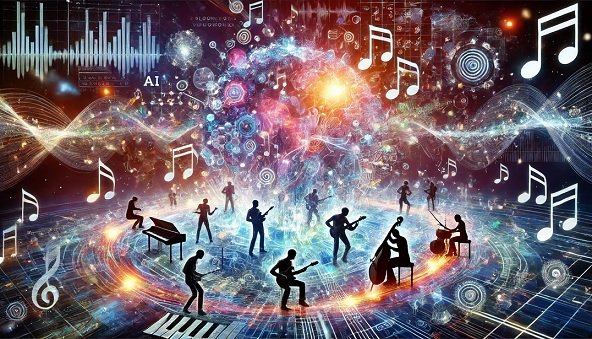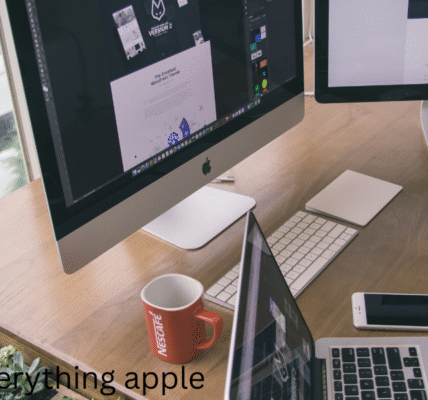In the ever-evolving landscape of digital creativity, one trend that is making waves across industries is the rise of AI-generated music. Once viewed as a novelty, artificial intelligence in the music domain has matured into a powerful tool, enabling creators, producers, and enthusiasts to explore new artistic frontiers. Today, platforms like Adobe Express allow anyone—from novice beat makers to seasoned composers—to Create AI Music with astonishing ease and sophistication.
This article explores the transformation AI is bringing to music production, its key benefits, how it works, and the broader implications for the future of the music industry.
The Evolution of Music Creation
Historically, music creation was limited to those with access to instruments, technical knowledge, or expensive software and studio time. Composing music required a deep understanding of musical theory, performance ability, and often collaboration with sound engineers.
With the digital revolution came MIDI software, digital audio workstations (DAWs), and virtual instruments, making the process more accessible. But even then, crafting a high-quality track still required time, experience, and often a steep learning curve.
Enter artificial intelligence. AI in music is not merely about automating repetitive tasks; it’s about enhancing creativity, suggesting ideas, and democratizing access to musical expression.
How AI Music Generation Works
At the core of AI music tools is machine learning. These systems are trained on vast datasets of music spanning multiple genres, styles, and eras. Through this training, the AI learns patterns, structures, harmonies, and rhythms commonly found in human-composed music.
Using this learned knowledge, AI can then:
- Compose melodies
- Generate harmonies
- Suggest chord progressions
- Mimic the style of specific genres or artists
- Create full-length tracks with intros, verses, choruses, and outros
Users simply input prompts—such as mood, genre, tempo, or even lyrics—and the AI generates music tailored to those specifications. Some advanced tools allow for more refined customization, enabling users to tweak arrangements, swap instruments, and control transitions.
Key Benefits of Using AI in Music Creation
1. Accessibility
AI music platforms eliminate the need for formal music training. Anyone with an idea can turn it into a musical composition in minutes. This levels the playing field and opens doors for aspiring musicians, content creators, and marketers.
2. Speed and Efficiency
What used to take hours or days in a traditional studio can now be accomplished in a fraction of the time. AI tools streamline the creative process, allowing users to iterate rapidly and focus on artistic direction rather than technical details.
3. Inspiration and Ideation
AI can serve as a creative partner. When artists experience writer’s block or seek new directions, AI-generated suggestions can serve as a jumping-off point or provide fresh perspectives.
4. Cost-Effective Production
For independent artists and small businesses, producing music often comes with a hefty price tag. AI-generated music significantly reduces production costs by cutting down the need for studio time, session musicians, and expensive software.
5. Customization and Versatility
Whether you need a lo-fi beat for a YouTube vlog, background music for an ad, or a high-energy track for a fitness video, AI tools can deliver personalized music tailored to specific use cases.
Use Cases Across Industries
The ability to Create AI Music isn’t just exciting for musicians—its applications span various industries:
1. Content Creation
YouTubers, podcasters, and TikTok creators can generate unique soundtracks that enhance their content, match specific moods, and avoid copyright issues.
2. Marketing and Advertising
Brands can now produce original music for campaigns without licensing fees. AI music helps align audio branding with target audiences quickly and affordably.
3. Gaming
Video game developers use AI to generate dynamic soundtracks that adapt to gameplay in real-time, creating a more immersive experience.
4. Education
Music educators use AI tools to teach students about composition, harmony, and musical structure interactively, allowing students to see instant results from their input.
5. Therapy and Wellness
AI-generated music is being explored for therapeutic applications such as guided meditation, stress relief, and mood enhancement. Custom compositions can be tailored to individual emotional needs.
Popular AI Music Platforms
Several tools have emerged that showcase the potential of AI in music. While each has unique features, many share core capabilities.
- Adobe Express – Offers a user-friendly platform to generate professional-quality music for videos, social posts, and other multimedia projects.
- Amper Music – An AI music composition tool geared toward content creators.
- AIVA (Artificial Intelligence Virtual Artist) – Used for creating emotional soundtracks for films and games.
- Soundraw – Allows users to create and customize songs using AI assistance.
- Boomy – Designed for quick song creation, even offering distribution features.
These tools differ in complexity, licensing models, and customization options, but all reflect the direction the industry is heading: more automation, more creativity, and more accessibility.
Addressing Concerns and Challenges
As with any disruptive technology, the rise of AI in music raises important questions.
1. Authenticity and Originality
Can music created by machines ever match the emotional depth of human compositions? Critics argue that AI lacks genuine emotional experience, which is often the soul of great music. Supporters, however, counter that AI is simply a new medium—one that extends human creativity rather than replaces it.
2. Intellectual Property and Licensing
Who owns AI-generated music? Is it the platform, the user, or a shared ownership model? These legal grey areas are still being debated, and it’s vital that platforms clearly define usage rights and copyright terms.
3. Job Displacement
Some fear that AI might replace human musicians or composers. While AI can automate certain tasks, it is more likely to become a tool that enhances human efforts rather than eliminate them entirely.
The Future of Music with AI
Looking ahead, AI’s role in music will continue to grow, not only in creation but also in analysis, recommendation, and live performance. Imagine AI that:
- Plays alongside musicians in live settings, adapting in real-time
- Analyzes global music trends to forecast the next big sound
- Curates personalized playlists based on mood detection from wearable tech
Moreover, as AI music tools become more advanced, they may allow for deeper human-AI collaboration—blending human intuition with machine precision.
Tips for Getting Started with AI Music Tools
If you’re new to AI music, here’s how to begin:
- Choose a Platform: Start with a beginner-friendly platform like Adobe Express.
- Define Your Goal: Are you creating for a podcast, video, or just experimenting?
- Input Basic Parameters: Select mood, genre, tempo, or keywords.
- Preview and Customize: Listen to what the AI generates and refine it to match your vision.
- Export and Use: Download your track and incorporate it into your project.
Most tools offer free trials or limited-use features, so you can test them out before committing.
Real-World Success Stories
Independent Artist Collaboration
A solo artist used AI-generated harmonies and drum loops to produce a viral hit on TikTok, which eventually led to a record deal. The artist credited the AI tool with helping develop the track’s signature sound.
Small Business Branding
A local café created its own ambient playlist using AI music generation. Customers appreciated the unique, relaxing vibe, and the brand gained recognition for its original in-house sound.
Educator Engagement
A high school music teacher integrated AI music into the curriculum, enabling students to explore composition without needing to read sheet music. Engagement and creativity surged.
Conclusion
AI is not here to replace the soul of music—it’s here to amplify it. By providing tools that make music creation faster, cheaper, and more accessible, AI empowers a broader range of people to engage with sound in meaningful ways. Whether you’re a hobbyist, an educator, a brand strategist, or an aspiring artist, now is the time to explore how AI can revolutionize your relationship with music.
If you’re ready to dive into the world of next-gen music creation, explore how to Create AI Music today and join the sound revolution of tomorrow.




